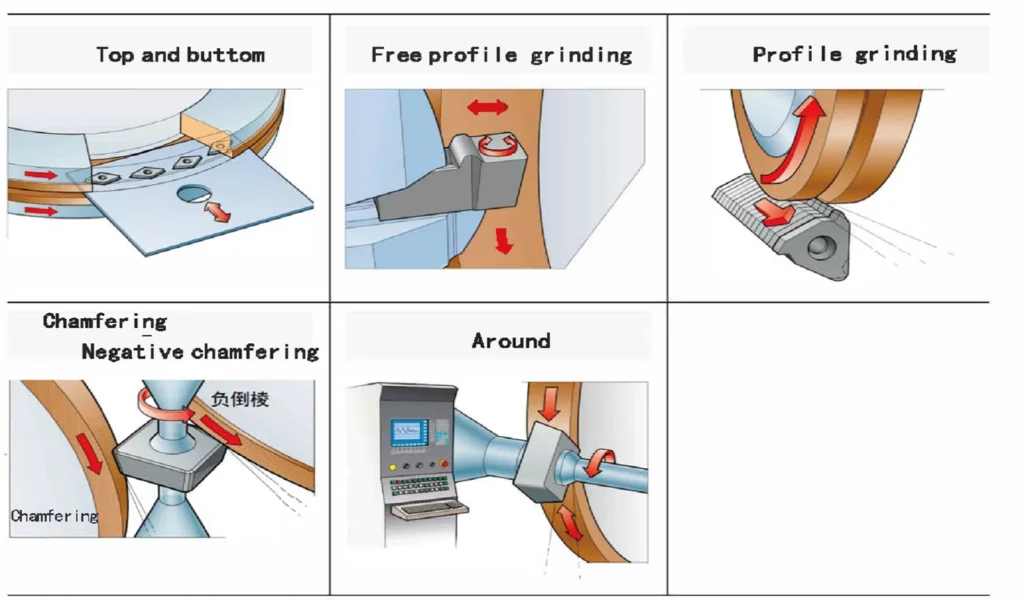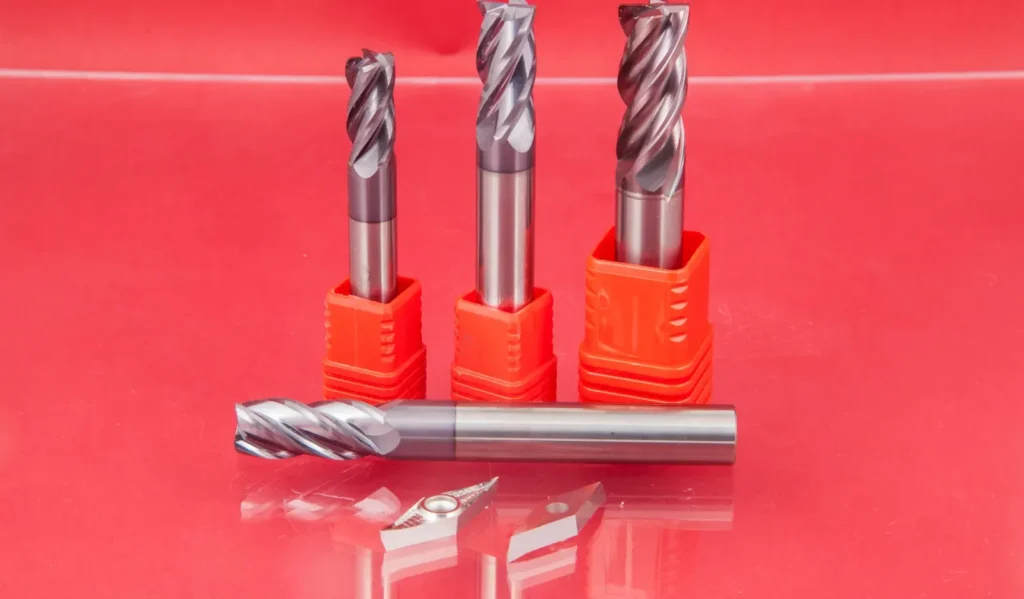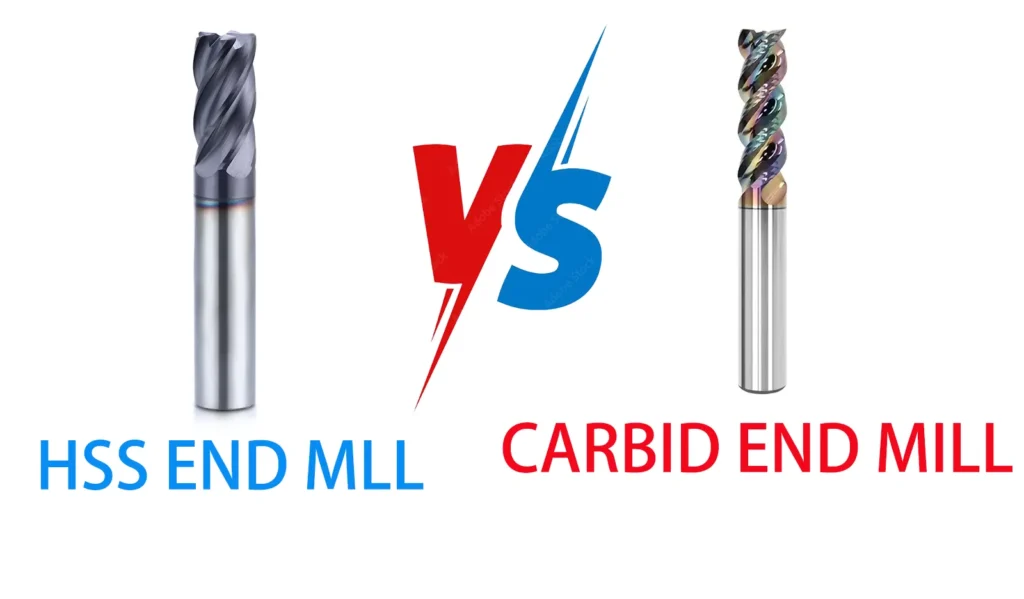掌握圓錐球頭立铣刀:最佳進給與速度
在精密加工領域,錐度球頭立铣刀已成為以無與倫比的精度製造複雜三維表面不可或缺的工具。這些多用途切削工具結合了錐形端銑刀的優點與球鼻端銑刀平滑的精加工能力,使其成為廣泛應用的理想工具。在本綜合指南中,我們將探討錐形球頭立铣刀的複雜性,尤其著重於進給與速度的最佳化,以達到最高的效率與品質。
瞭解錐形球頭立铣刀的獨特設計
錐形 球頭立铣刀 的特點在於其獨特的幾何形狀,即沿著切削長度直徑逐漸減小,最終形成半球形刀尖。與傳統立铣刀相比,這種獨特的設計具有多項優勢:
- 提高剛性:錐形狀提供更強的剛性,減少加工時刀具的偏移。
- 排屑效果更佳:錐度使排屑更有效率,特別是在深腔銑削時。
- 增加觸及範圍:錐形輪廓可進入狹窄的角落和較深的口袋。
- 光滑的表面處理:球頭可確保輪廓表面的光滑度。
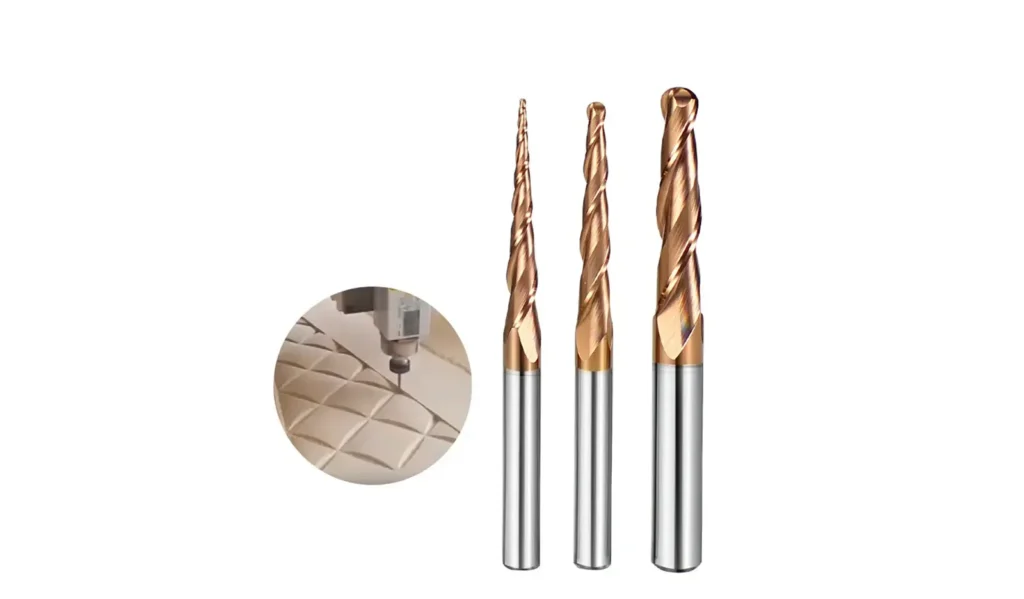
應用與優勢
錐形球頭立铣刀在各種加工作業中表現優異,包括:
- 3D 輪廓和表面精加工
- 模具製造
- 航太零件製造
- 醫療器材生產
- 藝術和雕塑作品
這些工具的多功能性使其對於加工具有複雜幾何形狀的複雜零件的加工人員來說是無價之寶。
選擇正確的錐形球頭立铣刀
針對您的特定應用選擇適當的錐形球頭立磨,是達到最佳效果的關鍵。請考慮下列因素:
- 材料相容性
- 錐度角度和長度
- 球鼻直徑
- 笛子數量
- 塗層類型
這些元素中的每一個都對工具的性能和壽命起著決定性的作用。
最佳化饋送與速度
有效使用圓錐球頭立铣刀最重要的一環是設定正確的進給與速度。讓我們深入瞭解影響這些參數的因素,以及如何計算這些參數以獲得最佳效能。
影響進料和速度的因素
有幾個變數會影響錐形球頭立铣刀的理想進給和速度:
- 工件材料
- 刀具材料和塗層
- 切割深度
- 跨步距離
- 機器功能
- 切削策略 (爬坡銑削與傳統銑削)
計算最佳進料和速度
要確定錐形球頭立铣刀的最佳進給和速度,請遵循以下步驟:
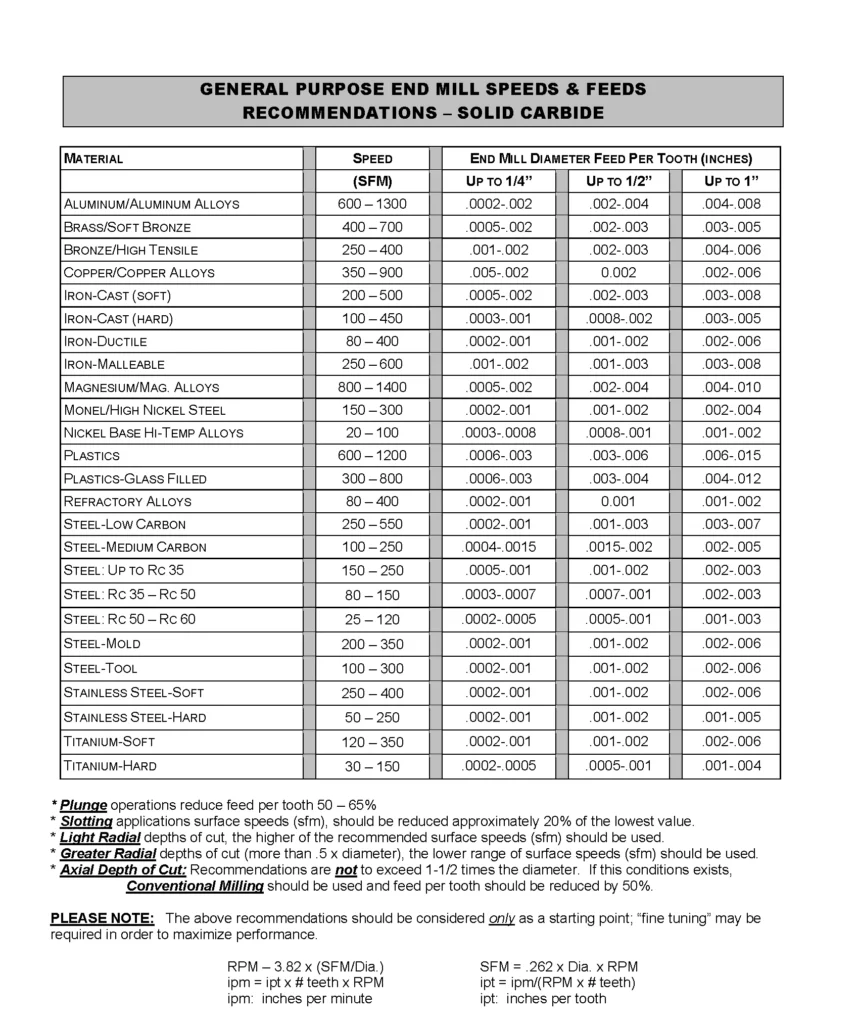
- 針對您的刀具與工件材料組合,確定建議的每分鐘表面呎吋 (SFM)。
- 使用公式計算主軸轉速 (RPM):RPM = (SFM x 3.82) / 刀具直徑
- 根據工具製造商的建議,建立切屑負荷(每齒進給)。
- 使用公式計算進給率:進給速率 = RPM x 刀槽數 x 切屑載荷
需要注意的是,這些計算只是一個起點。通常需要根據實際加工結果進行微調,以獲得最佳性能。
應避免的常見錯誤
設定錐形球頭立铣刀的進給與速度時,請注意這些常見的錯誤:
- 忽略不同深度的有效切割直徑
- 忽略針對不同材料調整速度
- 使用過深的切削深度或步距
- 未考慮機器的限制
使用錐形球頭立铣刀的最佳做法
為了最大化圓錐球頭立铣刀的效能與壽命,請考慮這些最佳實務:
- 使用 爬升銑削 盡可能提高表面光潔度和刀具壽命
- 實施適當的刀具路徑策略,以維持一致的接合
- 利用高速加工技術提高效率
- 採用適當的冷卻或潤滑方法
維護與保養
圓錐球頭立铣刀的正確保養對於確保穩定的性能和長壽命是非常重要的。定期檢查、清潔和適當儲存可大幅延長這些精密工具的壽命。
常見問題的疑難排解
使用錐形球頭立铣刀時,即使有最佳的進給與速度,也可能會發生問題。我們將討論常見的問題,例如振動、表面粗糙度差、刀具過早磨損,以及解決這些問題的方法。
錐形球頭立铣刀技術的未來趨勢
隨著加工技術的不斷發展,錐形球頭立铣刀也在不斷發展。我們將探討刀具設計、材料和塗層方面的新趨勢,這些趨勢有望增強這些多功能切削刀具的能力。
總結
掌握圓錐球頭立铣刀的使用,特別是在最佳化進給與速度方面,對於達到優異的加工效果至關重要。藉由瞭解這些刀具的獨特特性並實施最佳作法,加工人員可以在廣泛的應用領域中充分發揮這些刀具的潛力。隨著技術的進步,錐形球頭立铣刀無疑將在精密製造領域發揮越來越重要的作用。
